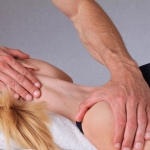Can osteopathy be used as a treatment to relieve musculoskeletal pain?
A study has concluded that there is "promising evidence" for osteopathy to treat pain associated with musculoskeletal conditions.
The osteopathy is an alternative medicine whose main objectives are to restore and maintain the balance of the whole body in order to achieve its recovery and preserve its capacity for self-regulation, explain from Top Doctors.
The professional in charge of carrying out the osteopathy is the osteopathwho detects, treats and prevents health problems by stretching and massaging the muscles, joints and connective tissues of each patient.
Osteopathy is similar to physiotherapy. However, the techniques used by osteopaths are based on the laws governing life and living organisms.
Osteopathy as a treatment for musculoskeletal injuries
A recent study has concluded that there is "promising evidence" that osteopathy, through physical manipulation of the body's tissues and bones, may be able to relieve pain associated with musculoskeletal conditionsas published in the magazine BMJ Open.
This review of the scientific evidence has highlighted that there is also little or inconclusive evidence to support the use of osteopathy in children, to treat migraine or to treat irritable bowel syndrome (IBS).
Osteopathy is an alternative medicine that was first developed in the late 19th century in the United States, and, in the last decade, it has become more and more popular. gaining popularity for the treatment of musculoskeletal disorders.
This is why the researchers of the present study set out to assess their safety and efficacy for different conditions.
Therefore, they collected data from different studies and clinical trials that had been published by November 2021.
In total, nine systematic reviews or meta-analyses conducted between 2013 and 2020 were analysed, involving 55 primary trials and 3740 participants.
All of them reported on the use of osteopathy in a wide range of conditions, such as acute and chronic non-specific low back pain, chronic non-specific neck pain, chronic non-oncological pain, primary headache and irritable bowel syndrome (IBS).
More research is needed to corroborate the data.
The findings that were grouped together reported that osteopathy is more effective than other approaches to reduce pain and improve physical function in acute/chronic non-specific low back and neck pain and chronic non-cancer pain.
However, the small sample size, some contradictory findings and wide variations in the study design, concluded that cannot be backed up the effectiveness of osteopathy for its use in children with various conditions, such as attention deficit hyperactivity disorder, asthma, infantile colic, migraine treatment and IBS.
As the researchers explain, the only conclusions of this review suggest that "osteopathy may be effective in the treatment of musculoskeletal disorders, specifically with regard to the chronic low back pain non-specific and low back pain in pregnant women or those who have just had a baby".
Despite this, as there are few corroborating studies, it still more systematic reviews are needed The experts conclude that "well-conducted" clinical trials, as well as clinical trials following different specific guidelines, aim to "confirm and extend the possible use of osteopathy in some conditions, as well as its safety".


